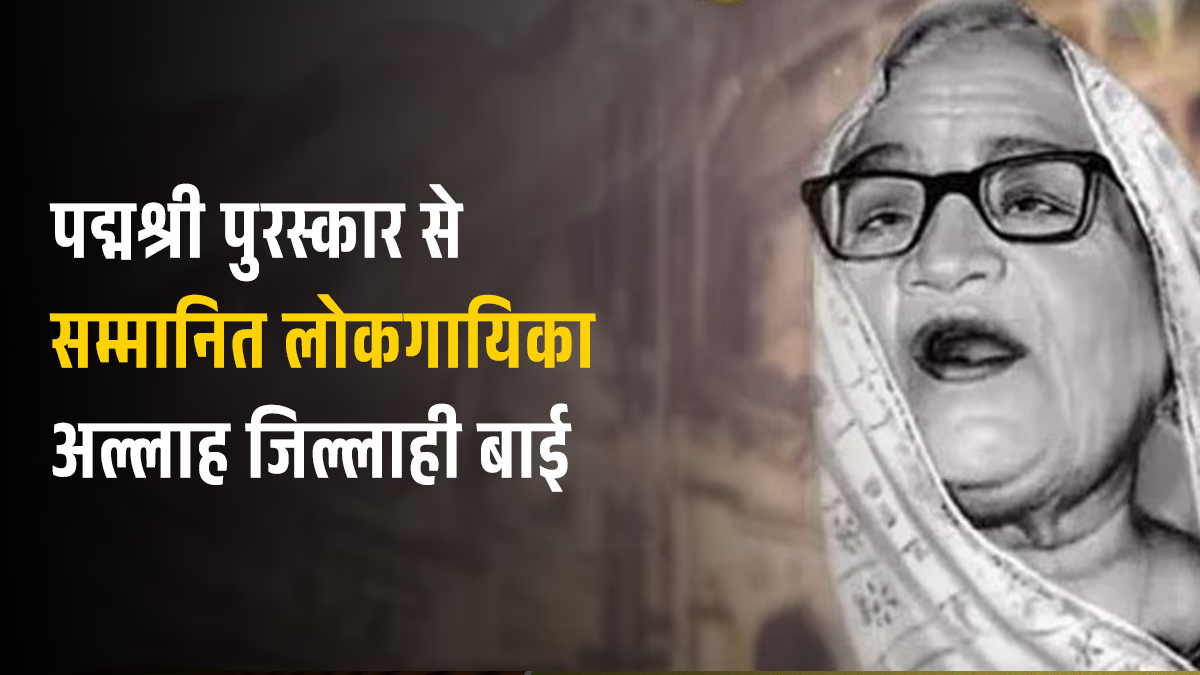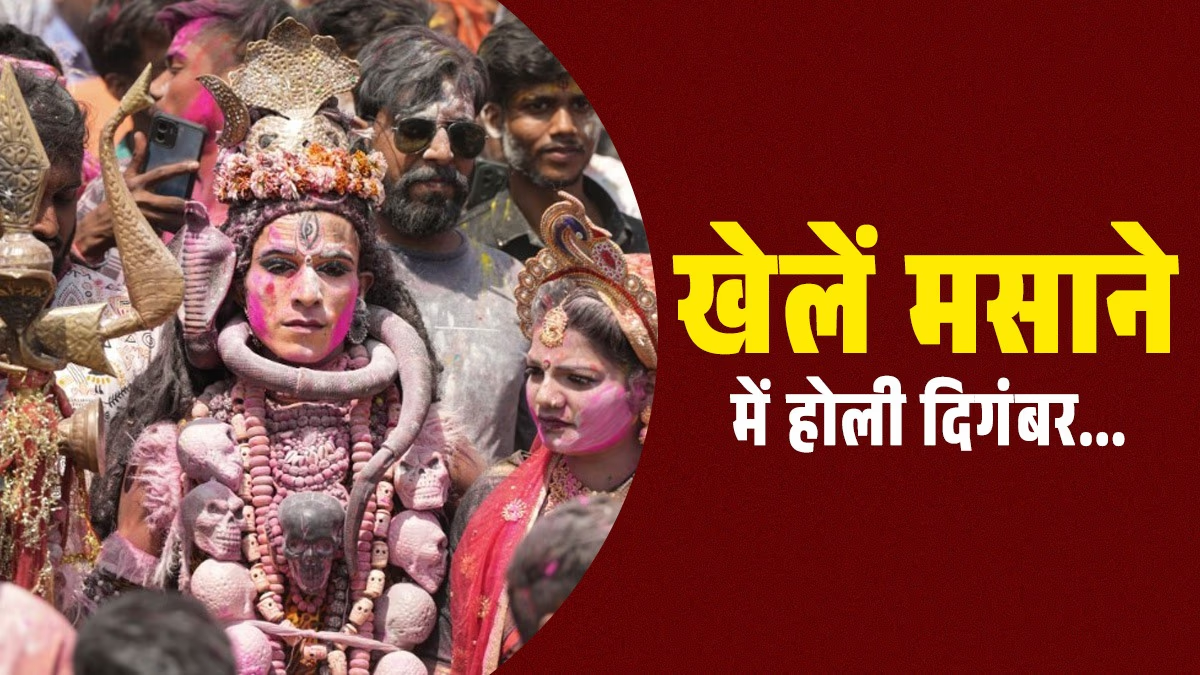Battles aren't just fought on fields. The biggest conflicts happen at home, where warriors are bid farewell and their loved ones hold back tears. Although epic stories of this emotional warfare are rare, the ballads of longing from Rajasthan's vibrant desert land create a lingering sense of moisture.
A Song that Defines Rajasthan
Lovers and wives long for partners lost to war, with many songs capturing the depth of their yearning. The separation and loss led to words so poignant, set to melodies that now serve as iconic representations of Rajasthan. To understand Rajasthan, even without uttering its name, just one line from the song 'Kesariya Balam' would suffice.

Source: aajtak
The origins of this beautiful and poignant song? What is the story behind it?
The Love Story of Dhola-Maru
This song entwines with a timeless love story, part of Queen Lakshmikanti Chundawat's noted book 'Love Stories of Rajasthan.' This enchanting tale, 'Dhola-Maru,' captures a romance as enduring as the sands that shaped it.
Just as the tales of Heer-Ranjha, Sohni-Mahiwal, and Shirin-Farhad have captivated hearts, so does the iconic narrative of Dhola and Maru nourish the imagination in Rajasthan. Even today, couples marrying in Rajasthan are often fondly called the pair of Dhola-Maru, with 'Dhola' embodying the essence of a partner and a lover.
The singer B Praak, popular for his rendition in the movie Shershaah, highlights the sentiments involved in the union:
Chup mahi chup hai Ranjha, bole kaise ve na ja, bole kaise ve na ja, aaja aaja
Ve mera Dhola ni aya Dhola, ve mera Dhola ni aya Dhola, Rab bhi khel hai khele, roz lagave mele
In this song, 'Dhola' is synonymous with the lover. Let's revisit the epic romance of Dhola-Maru, a celebrated lore of Rajasthan since the 8th century. Once, in the kingdom of Narwar, King Nal's son, charmingly named Dhola by his mother, wove laughter into everyone’s hearts with his innocent demeanor.

Source: aajtak
Who Were Dhola and Maru?
Dhola was wed to Maruvani, the daughter of King Pingal of Pungal, at a tender age—just three and one and a half years old, respectively. While Dhola's family returned to their kingdom, young Maru stayed behind until she reached maturity. Years passed, and a famine forced Pingal’s kingdom to disperse.
Dhola Remarries
Eventually, with time a blur and Dhola grown into adulthood, he wed again, barely recalling his childhood bride. However, news of his forgotten marriage reached his new wife, revealing Maru’s unparalleled beauty revered across lands.
Messages Blocked by Dhola's New Wife
Sadly, every attempt from Maru's family to reunite her with Dhola was thwarted by Dhola's wife, driven by jealousy, preventing any messengers from reaching them. One night, Maru dreamt of an unfamiliar face calling out to her, spurring her to ask her father, Pingal, to try once more.
A Crafty Plan by King Pingal
This time, King Pingal devised a clever strategy to send a message that wouldn't seem like one. He chose a wise minstrel, accompanied by a dancer. They sang haunting melodies of longing, the dancer weaving them into a visual tapestry, traveling seven months to reach Narwar.
No ordinary messenger this time, instead a minstrel and dancer—Dhola’s wife’s soldiers let them through, enchanted by their performance, allowing them to reach the royal residence.
Before leaving, Maruvani whispered heartfelt couplets to the minstrel, hoping to reach Dhola’s ears. The minstrel promised to reunite them or bear his demise as the price if he failed.

Source: aajtak
How the Cunning Minstrel Delivered the Message
In the depth of night, under roaring thunderstorms and flashing lightning, the minstrel’s melodious tunes resonated in Dhola's ears, igniting a forgotten longing and recognition of his beloved Maru, her kingdom Pungal, and his cherished past.
Upon hearing echoes of 'Pungal,' Dhola summoned the minstrel for more.
"Dhola, Narwar awaits you! Rain awaits your presence in Pungal’s embrace!"
Hearing Pungal reignite Dhola's heart, memories flooded in. He, mounted on a swift, obsidian camel, raced to Pungal, bringing Maru home. Yet, their reunion was fraught with trials between Narwar and Pungal, depicted vividly in the narrative, highlighting unwavering devotion against numerous challenges.
These songs of affection bear witness to their trials, echoing Maru's longing and Dhola's valor, intertwined with Rajasthan’s cultural soul, much like the radiant mirror of Maru's reflected beauty through the minstrel's song.
Performing since 1902, singer Allah Jilai Bai immortalized ‘Kesariya Balam’ with regal grace, shaping the narrative within the folk tradition itself, earning the Padma Shri Award in 1982, and the Sangeet Natak Akademi Award in 1988.
'Welcome to Our Land'—The Anthem of the 'Dharohar' Ceremony
On the shores of Lake Pichola in Udaipur, the Bagore Ki Haveli—an emblem of heritage—comes alive with cultural performances. Its 'Dharohar' performance has captured audiences for the last 25 years, directed by Deepak Dixit, revealing a glimpse of the legendary story of Dhola-Maru through ‘Kesariya Balam’ within minutes.
This anthem encapsulates the identity of desert sands, forming the gateway to understanding Rajasthan’s vibrant culture.
'The Mand Style of 'Kesariya Balam'
Today, it serves as a welcoming melody, inviting those eager to know the heart of Rajasthan. Performed in Mand style, these songs weave emotions like longing, valor, and mystique, dating back to the 8th or 9th century, reaching back to ancient wedding customs and familial farewells—roots as old as love and war itself.
This ballad celebrates the Rajput warrior's honor, their bravery, and sacrifices, yet at its core, is the love saga of Dhola-Maru—a testament to enduring love faced with war’s harsh realities, an eternal emblem of Rajasthan’s narrative legacy.




